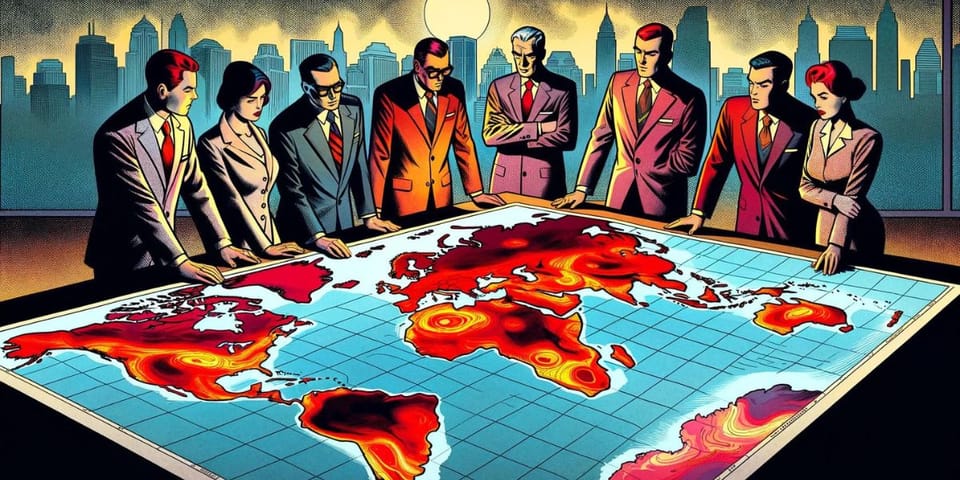A deep(ish) dive into that “$38trn income loss by 2050” climate risk article

Like many others, I’m sure, I’ve spent the past few days reading the new article in Nature on the economic commitment of climate change (I’ll refer to this as Kotz et al (2024) or just ‘Kotz’). The headline figure they computed is very stark – given emissions that have already been, um, expelled, the world is already committed to a 19% income reduction – $38trn – over the next 26 years.
You know the study is serious because they provide a prediction interval (presumably 95%) for their estimate of between 11% and 29%. The absence of this kind of confidence indication is usually a sign that a study is an analytical blancmange.
The modeling used in the paper is very complex, so I actually went back to an earlier referenced work (Burke et al (2015) or just ‘Burke’) to try to understand exactly what’s going on. If you’re struggling with the technicalities of the latest article, but know your way around graduate level econometrics, I’d advise taking a look at this earlier piece, or to read the two articles in tandem. Put simply – and with apologies if I’m off-base – the authors are relating regional temperature anomalies to observed fluctuations in economic activity and then inferring the effect on income from temperature increases that are already baked-in due to past emissions. Burke sums this up succinctly:
“In an ideal experiment, we would compare two identical countries, warm the temperature of one and compare its economic output to the other. In practice, we can approximate this experiment by comparing a country to itself in years when it is exposed to warmer- versus cooler-than-average temperatures due to naturally occurring stochastic atmospheric changes.”
The key differences between the papers is that Kotz et al (2024) sources regional data and includes some additional climate variables while Burke et al (2015) looks only at annual temperature averages at the national level. There are also a number of technical enhancements and extensions considered in the more recent paper. Though Burke is more macro-oriented and Kotz more granular, both perspectives are useful. Though it seems unintuitive, macro studies can implicitly capture some factors that micro studies miss. An example is the Paradox of Thrift, a controversial topic in macro that cannot even be studied at the micro level.